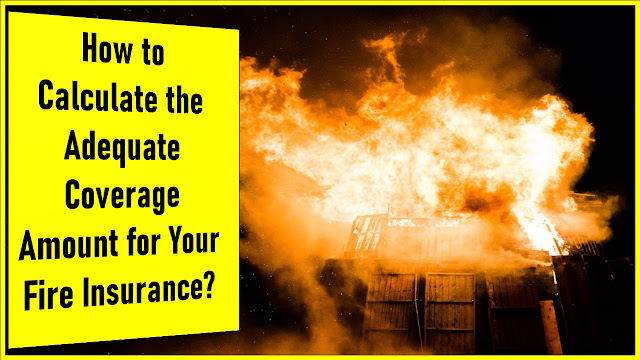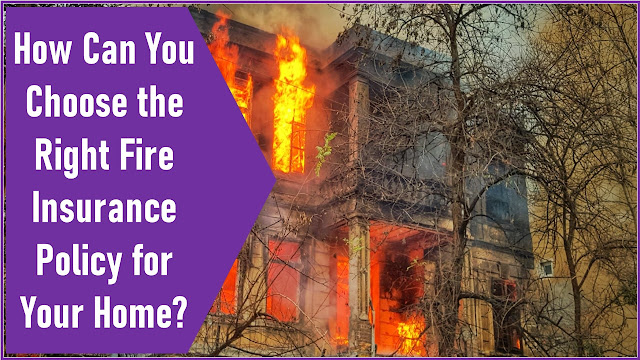How to Calculate the Adequate Coverage Amount for Your Fire Insurance?

Introduction
In this article, I’ll guide you through the crucial steps of calculating the adequate coverage amount for your fire insurance policy. Fire insurance plays a pivotal role in safeguarding your home, business, or property from the devastating financial consequences of fire-related incidents. However, determining the right coverage amount can be a complex task, as it requires a careful assessment of various factors to ensure you’re adequately protected without overpaying for unnecessary coverage.
Whether you’re a homeowner looking to protect your residence or a business owner safeguarding your assets, understanding how to calculate the appropriate fire insurance coverage is essential. We’ll delve into the key considerations, such as property valuation, replacement cost estimation, and the importance of regular policy reviews. By the end of this article, you’ll be equipped with the knowledge needed to make informed decisions and ensure that your fire insurance coverage provides you with the peace of mind you deserve.
- Property valuation and assessment.
- Replacement cost estimation.
- Inventory and asset evaluation.
- Policy options and coverage types.
- Risk factors and mitigation strategies.
- Regular policy review and updates.
Property Valuation and Assessment:
One of the critical steps in determining the adequate coverage amount for your fire insurance policy is to conduct a thorough property valuation and assessment. This involves accurately appraising the value of the property you intend to insure, be it your home, business premises, or any other real estate. To begin, you should engage the services of a professional appraiser or use online tools and resources that can help you estimate the current market value of your property. Take into account factors such as location, size, age, and any unique features or improvements that may affect its worth.
Additionally, it’s essential to assess the property’s overall condition and construction materials. Older buildings may require more substantial coverage due to the potential cost of rebuilding with modern materials and complying with current building codes. Furthermore, if you own multiple properties, each should be individually evaluated to ensure that you’re adequately protected. By conducting a meticulous property valuation and assessment, you can establish a solid foundation for calculating the precise coverage amount needed to protect your investments against fire-related risks effectively.
Replacement Cost Estimation:
Once you have a clear understanding of your property’s value, the next crucial step is to estimate its replacement cost. Replacement cost refers to the amount of money required to rebuild or repair your property to its original condition in the event of a fire or other covered peril. It’s important to note that replacement cost is not the same as the property’s market value, as it doesn’t consider land value or market fluctuations.
To estimate the replacement cost accurately, consider factors such as construction costs, labor expenses, materials, and any special features or upgrades that may need to be replicated. Consulting with a building contractor or appraiser experienced in insurance valuation can be immensely helpful in this process. Keep in mind that underestimating the replacement cost can leave you underinsured while overestimating can lead to unnecessary premiums. Striking the right balance between adequate coverage and affordability is key when estimating the replacement cost, ensuring that your fire insurance policy provides you with the necessary financial protection in the event of a fire-related disaster.
Inventory and Asset Evaluation:
In addition to valuing the property itself, it’s equally crucial to assess the value of your belongings and assets within the insured property. Create a detailed inventory of all your personal possessions, equipment, furniture, and any valuable items. Document their condition, age, and estimated replacement value. This inventory is invaluable should you need to make a claim after a fire, as it provides evidence of your losses and helps insurance adjusters determine the appropriate compensation.
Furthermore, consider any specific assets or high-value items that may require additional coverage, such as jewelry, artwork, or expensive electronics. Most standard fire insurance policies have limits on coverage for these items, so you may need to purchase additional riders or endorsements to ensure they are adequately protected. By conducting a comprehensive inventory and asset evaluation, you not only safeguard your personal property but also ensure that your fire insurance policy reflects the full extent of your assets, minimizing the risk of being underinsured in the event of a fire.
Policy Options and Coverage Types:
Understanding the various policy options and coverage types available is essential when calculating the adequate coverage amount for your fire insurance. Fire insurance policies can differ significantly in terms of what they cover and the level of protection they offer. The two primary types of fire insurance policies are replacement cost and actual cash value (ACV). Replacement cost policies reimburse you for the full cost of repairing or replacing damaged property without considering depreciation. On the other hand, ACV policies factor in depreciation, meaning you’ll receive less compensation for older items. Choosing the right policy type depends on your preferences and budget.
Moreover, fire insurance policies often include additional coverages or endorsements. These can encompass coverage for personal belongings, liability protection, and additional living expenses (ALE) in case you need to temporarily relocate due to fire damage. Carefully evaluate your specific needs and financial situation when deciding on coverage types and limits. While a comprehensive policy might offer greater peace of mind, it could come at a higher premium. Balancing your coverage requirements with your budget is a crucial aspect of calculating the adequate coverage amount for your fire insurance.
Risk Factors and Mitigation Strategies:
When determining your fire insurance coverage, it’s crucial to consider the risk factors associated with your property’s location and surroundings. Some areas are more prone to wildfires, while others might face a higher risk of accidental fires due to factors like proximity to industrial zones or historical fire incidents. Understanding these risk factors allows you to tailor your coverage accordingly. For instance, if you reside in a wildfire-prone area, you may need specialized wildfire insurance in addition to your standard fire coverage.
Mitigation strategies play a pivotal role in managing fire-related risks and can influence your coverage needs. Installing fire-resistant roofing materials, maintaining defensible space around your property, and having fire extinguishers readily available are just a few examples of preventive measures. By implementing these strategies, you not only reduce the likelihood of fire damage but also demonstrate your commitment to risk mitigation, which can positively impact your insurance premiums. When calculating your coverage amount, factor in the effectiveness of your mitigation efforts and consider any potential discounts your insurer might offer for responsible fire prevention practices.
Regular Policy Review and Updates:
Calculating the adequate coverage amount for your fire insurance isn’t a one-time task but an ongoing process that requires regular policy review and updates. Over time, the value of your property and possessions may change due to factors like inflation, renovations, or acquisitions. Failing to adjust your coverage accordingly can leave you underinsured when you need it most. Therefore, it’s advisable to review your fire insurance policy annually or whenever significant life changes occur.
Additionally, keep abreast of changes in local building codes and regulations, as these can impact the cost of rebuilding your property in the event of a fire. Failure to comply with updated building codes could result in higher rebuilding expenses, which might not be covered if your policy is outdated. To ensure that your fire insurance adequately protects your assets, collaborate closely with your insurer, provide them with accurate information about your property and belongings, and stay proactive in updating your policy to reflect any changes. By maintaining a current and comprehensive policy, you’ll have peace of mind knowing that you’re well-prepared to face fire-related risks with confidence.
Conclusion
I hope this comprehensive guide on how to calculate the adequate coverage amount for your fire insurance has provided you with valuable insights and actionable steps to safeguard your property effectively. Fire insurance is not merely a financial obligation; it’s a crucial shield against the devastating consequences of unexpected fires. To conclude, remember that the key to determining the right coverage lies in meticulous property valuation, replacement cost estimation, and a thorough inventory assessment.
Furthermore, understanding policy options, risk factors, and mitigation strategies allows you to tailor your coverage to your unique needs and circumstances. Lastly, regular policy reviews and updates are essential to keeping your insurance in sync with the evolving value of your assets and any changes in risk factors. By following these guidelines and staying proactive, you can ensure that your fire insurance provides you with the peace of mind you deserve, knowing that you’re adequately protected against the unpredictable threat of fire.







